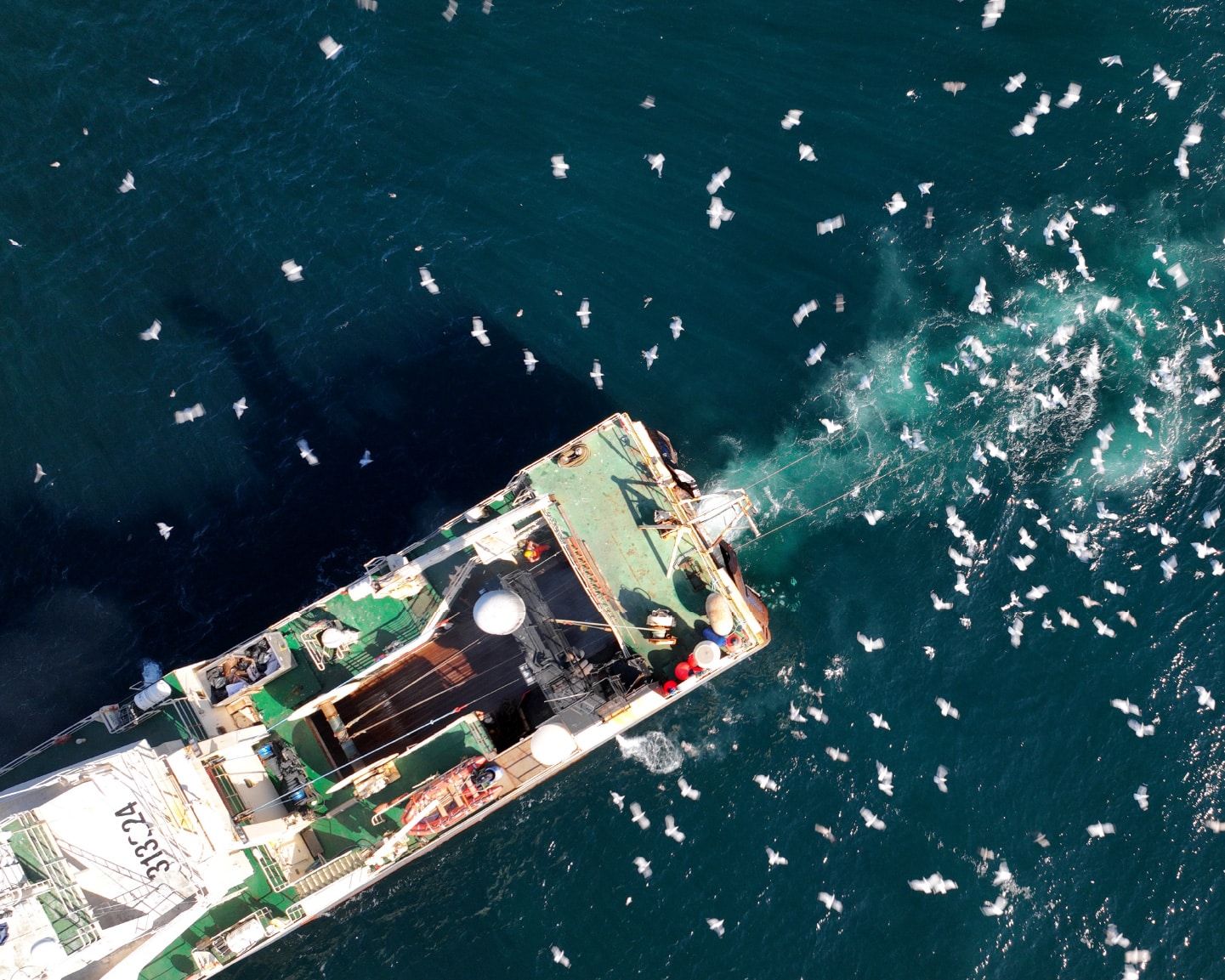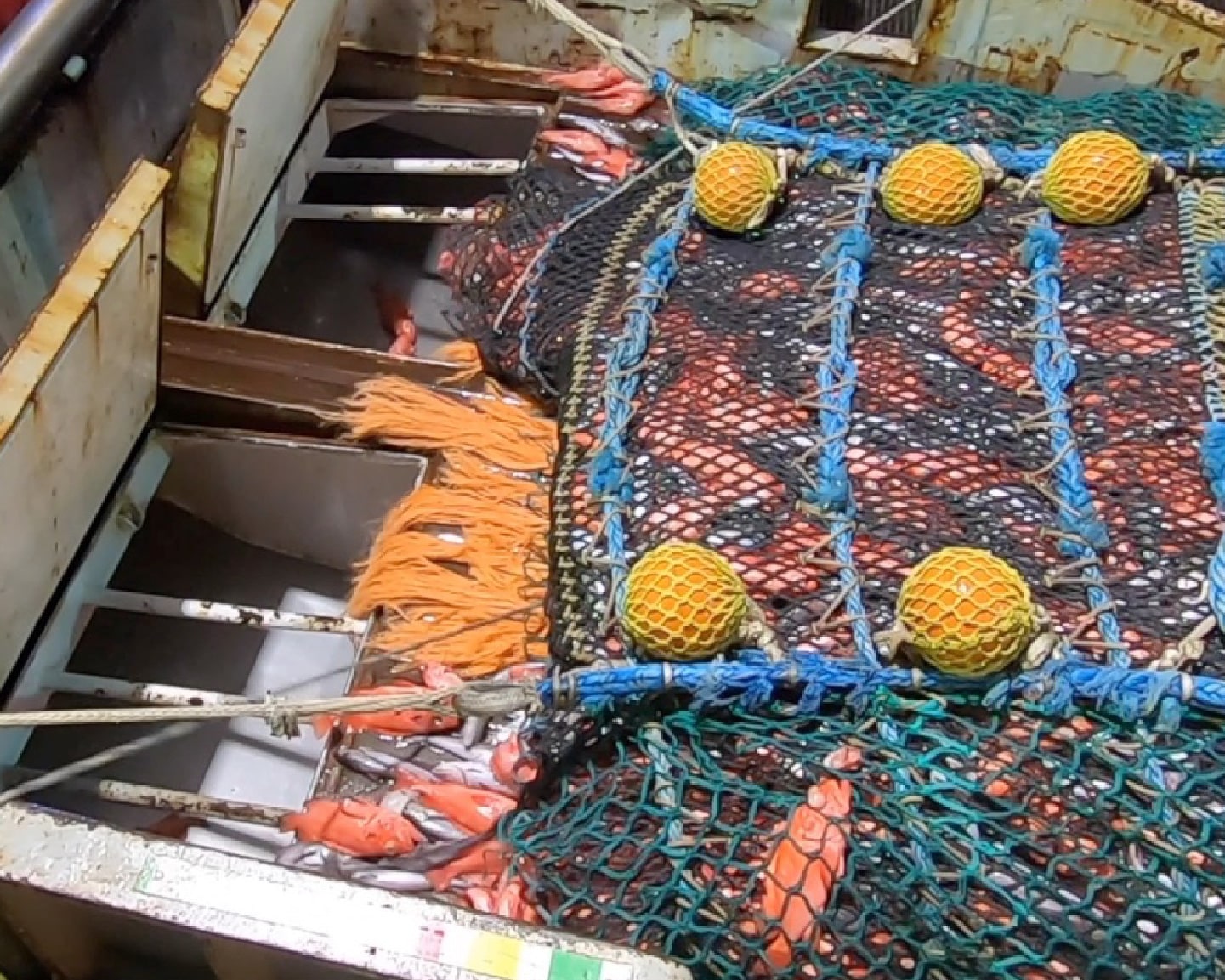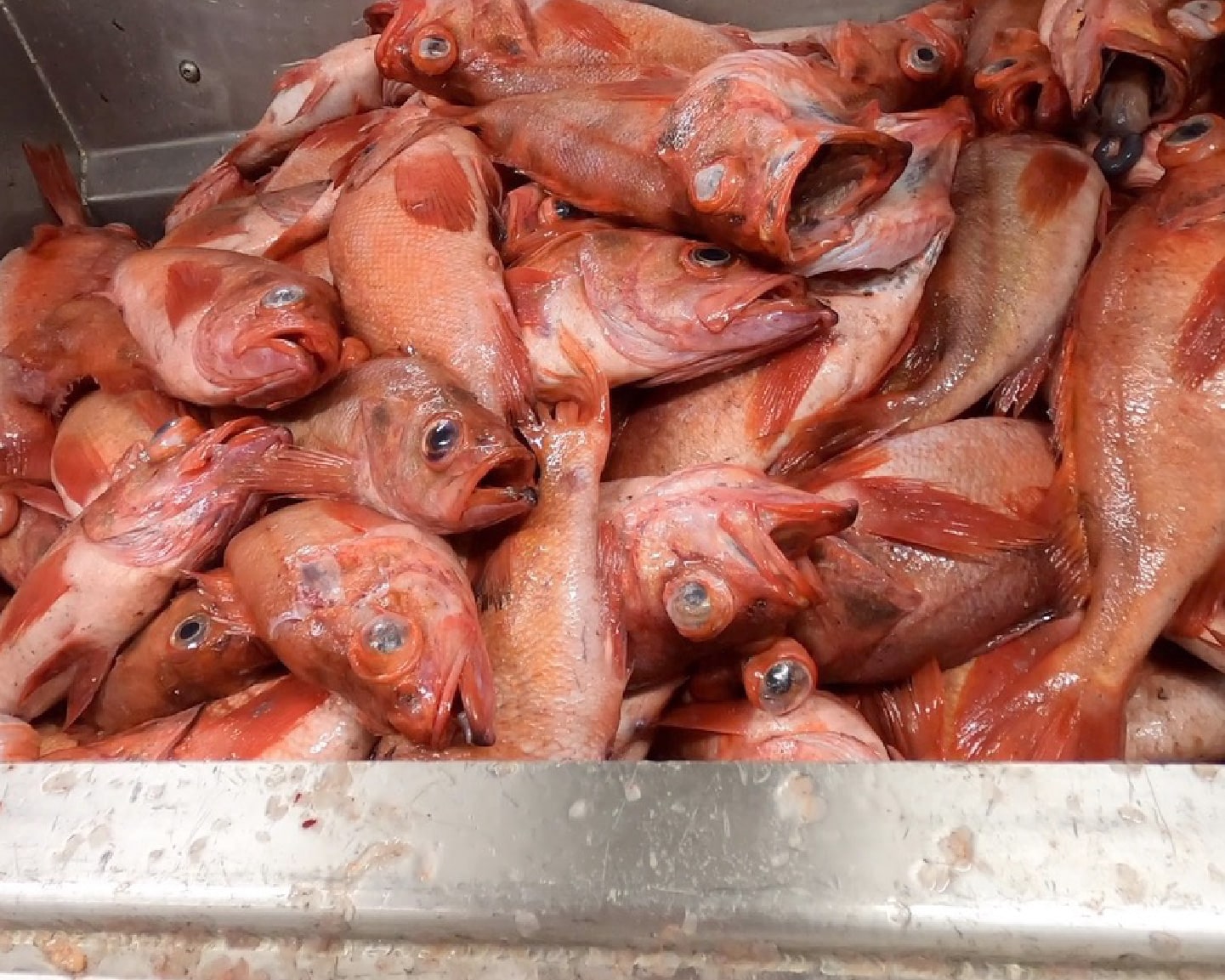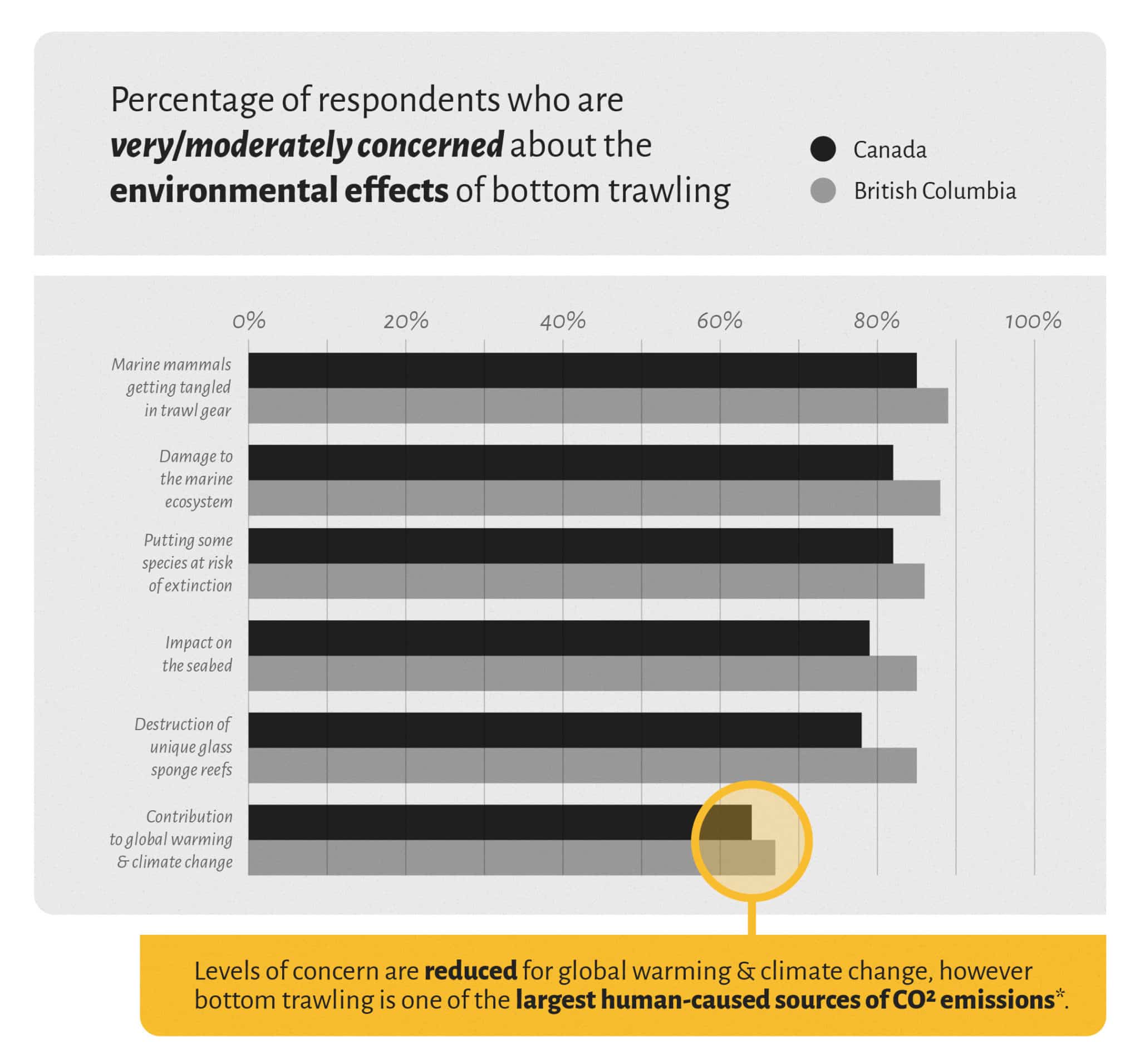Editor’s note: An issue of concern
Although industrial fishing has been a part of B.C’s history for over a century, large industrial fishing ships known as ‘bottom trawlers or ‘draggers’ began appearing on the B.C. coast within the last few years. Many of these vessels were not the typical coastal fishing ‘dragger’ or ‘trawler’ that people in the province were used to seeing. They were huge ships, some of which are up to 56 metres (183 feet) long. Many of these vessels are owned by large corporate entities and not local fishers. In the past two years the number of these ‘factories of the sea’ have been increasing along the B.C. coast. As other countries are banning bottom trawling, B.C. appears to be doing the opposite, causing alarm to many Indigneous and coastal B.C. communities. The scale of bottom trawling, in B.C., and especially the presence of large factory vessels, raises serious questions about marine protection and federal conservation policies. Bottom trawling has been linked to CO2 emissions that rival the entire global aviation industry 1, impacting the Earth’s ability to heal in these modern times of climate change. The automation of these large ships produces few jobs and miniscule economic value to the communities they are leaving in ruin. With ancient underwater seabeds and ecosystems experiencing permanent damage, Pacific Wild wanted to hear directly from the public on their views about bottom trawling, and what they thought about the federal government’s ability to manage our precious marine environment. We commissioned a national survey and this technical blog details the responses and what we heard.
1 Sala, E., Mayorga, J., Bradley, D. et al. Protecting the global ocean for biodiversity, food and climate. Nature 592, 397–402 (2021). https://doi.org/10.1038/s41586-021-03371-z
Introduction
Bottom trawling is a fishing technique that involves dragging a large, weighted net behind vessels. The technique is ‘non-selective’ meaning that it generally does not allow specific species to be targeted. Non-target species caught in the wake of trawl nets, and subsequently discarded as bycatch, suffer high mortality rates. On average, 23% of the fish and other marine species caught in trawl nets is thrown overboard as waste.
Bottom trawling is responsible for a wide variety of severe and interconnected ecological problems. In addition to bycatch, these problems include: (1) habitat destruction and disruption of soft and hard-bottomed ecosystems (such as threatened coral and sponge reefs); (2) sediment resuspension; (3) increasing the oxygen demand in ecosystems; (4) disrupting food chains by removing predators; and (5) releasing massive amounts of CO2 emissions (released from the ocean floor). These are but some of the devastating impacts of bottom trawling which lead to a loss of abundance in marine ecosystems and leave deep ecological scars that may take decades to heal, much like clearcutting a forest.
Because trawling takes place in a largely out-of-sight out-of-mind way, Pacific Wild sought to understand how much the Canadian and British Columbia public knew about this industrial fishing practice. In June 2022, we commissioned an independent polling company, Research Co., to structure a series of questions that would gather preliminary data on public opinion regarding the bottom trawl fishery in B.C. This technical blog explores the results.
The technical blog first addresses the overall survey design and methods, followed by a discussion of both Canadian and B.C. views and opinions.
Survey Methods & Design
A national online survey was conducted among 1,657 adults in Canada; with a secondary sample boost among 805 adults in British Columbia. The results below are based on this online study conducted from May 15 to May 17, 2022. All data has been statistically weighted according to Canadian census figures for age, gender and region(s) in Canada and British Columbia. The margin of error—which measures sample variability—is +/- 3.5 percentage points, nineteen times out of twenty.
The survey questions are specific to bottom trawling. In B.C., midwater trawling (i.e., where the net is not dragged on the bottom of the sea floor) is also used. Changes in fisheries management policies now allow both bottom and midwater trawling gear to be carried on board trawling vessels at the same time – with use and gear changes varying between vessels and locations. Because the majority of trawling takes place offshore, distinguishing what gear is being used – and when – is inherently difficult.
This descriptive technical blog report aims to remain at a higher-level discussion within the confines of transparency and policy reform in the trawler industry. As such, broad percentages are discussed below in general terms. This information is included in an effort to underscore the importance of bringing forward the concerns that Canadians and British Columbians have with the trawler industry. A more nuanced discussion and secondary analysis of specific survey results is expected to be provided in future work.
Canadian Views
Online survey of 1,657 Canadians
Over half of Canadians (59%) are aware of bottom trawling as an industrial fishing practice. Greater than (>)50% of all major political parties are represented in past voting behaviours of respondents.
55% of Canadians believe that bottom trawling is not allowed in Canadian waters. Respondents with a past voting behaviour of ‘Green’ had a higher belief that bottom trawling is currently not allowed. This belief is operationally false as bottom trawling is currently allowed.
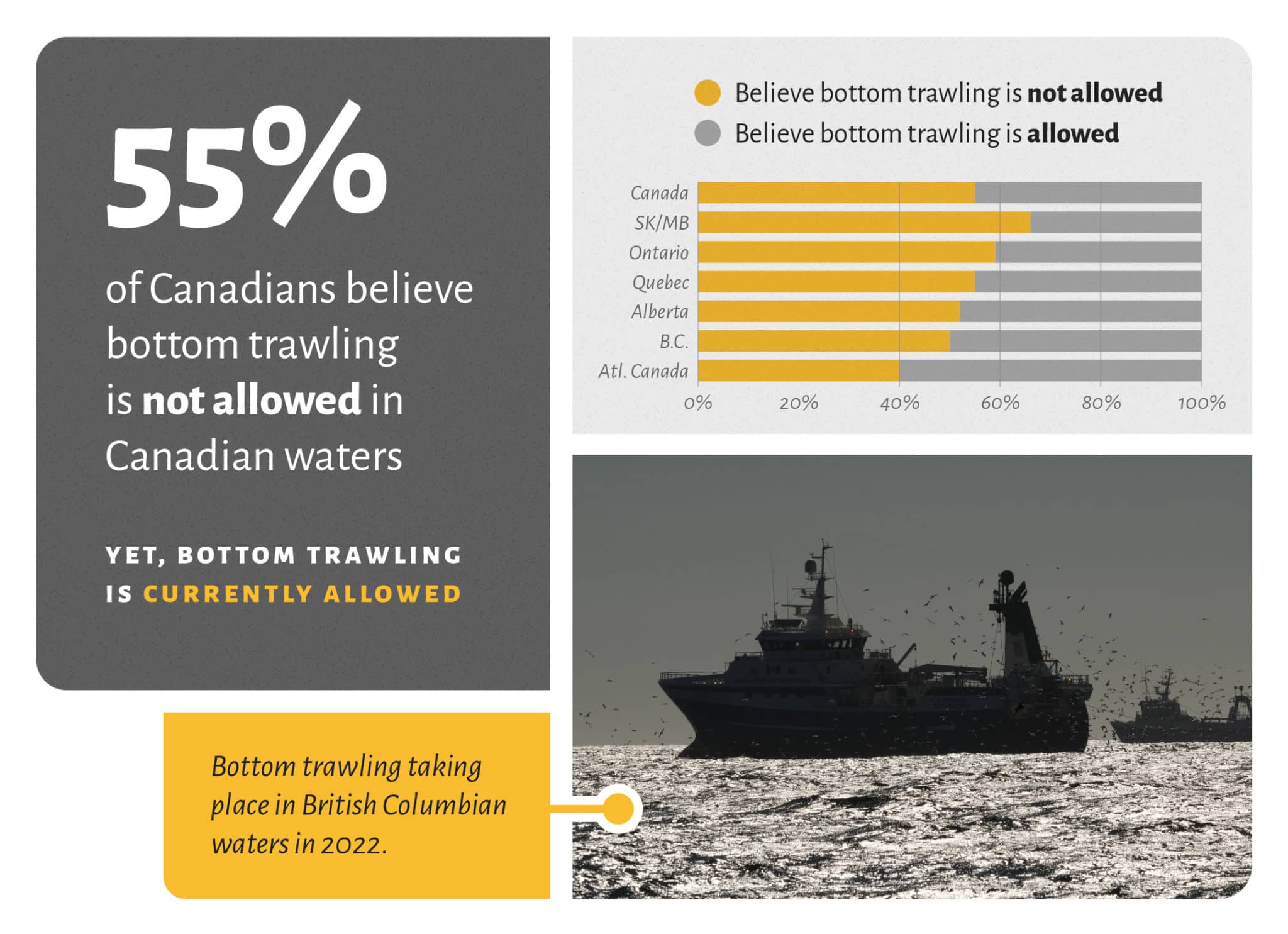
Two thirds of Canadians (67%) believe bottom trawling should not be allowed in Canadian waters. This is contrasted with 20% of Canadians who believe bottom trawling should be allowed. Support for bottom trawling is highest among Canadians who voted for the Bloc Québécois (37%) and the People’s Party (36%) in the 2021 federal elections. Support for bottom trawling drops substantially among those respondents who identified past voting preferences of Liberal Party (22%), Green Party (21%), New Democratic Party (NDP) (17%) and the Conservative Party (17%). With the exception of respondents identifying as having voted for the People’s Party of Canada, >50% of every major political party’s voters believe bottom trawling either ‘probably’ or ‘definitely’ ‘should not’ be allowed in Canada.
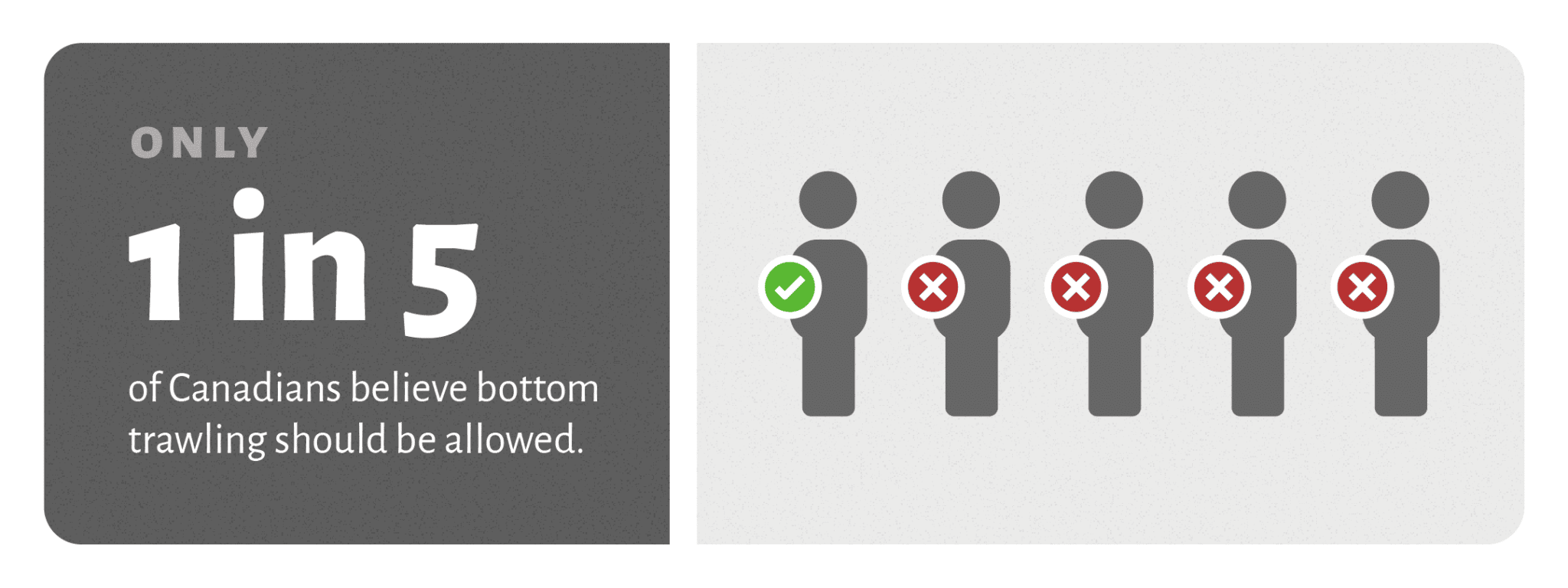
Half of the polled Canadians express confidence in the federal government’s ability to manage fisheries in Canada. This confidence was highest among respondents who previously voted Liberal or Bloc Québécois. 40% of Canadians have ‘not much’ or ‘no’ confidence in the ability of the federal government to manage fisheries.
When respondents were asked if they would consider voting for a political party that ran on a platform which included a ban on bottom trawling, more than a quarter (27%) of Canadians stated they would consider voting for such a party. With the exception of the People’s Party of Canada, this holds true across all major Canadian political parties. 45% of respondents stated they would be just as likely to vote for such a party.
Canadians were asked about their levels of concern relating to various environmental impacts bottom trawling may cause. With the exception of climate change, over 70% of Canadians are consistently either ‘very’ concerned or ‘moderately’ concerned about effects bottom trawling may have on the environment – regardless of past voting behaviours. On the subject of climate change, levels of concern are reduced substantially among respondents across all major political parties.
British Columbian Views
Online survey of 805 adults in British Columbia
The majority of British Columbians polled (67%) are aware of bottom trawling as a general fishery practice. Knowledge of bottom trawling is high among voters for all major political parties (66%-72%).
However, only half of British Columbians believe that the fishery practice is currently allowed in Canadian waters. Respondents that voted B.C. Green (59%) had the highest knowledge of the current allowance of the fishery practice in Canada. This is followed by B.C. Liberal voters (56%). B.C. NDP voters (47% of respondents) have significantly less understanding than other voters of the current allowance of trawling in Canada.
Over three quarters (77%) of British Columbians believe bottom trawling should ‘probably’ (29%) or ‘definitely’(48%) not be allowed in Canadian waters. The highest opposition was among B.C. NDP voters (83% of combined ‘probably should not’ and ‘definitely should not’ respective category respondents). B.C. Green voters similarly opposed bottom trawling (80% of combined ‘probably should not’ and ‘definitely should not’ respective category respondents). B.C. Liberal voters showed an approximate 10% difference in opposition to bottom trawling, with 73% of combined ‘probably should not’ and ‘definitely should not’ expressing opposition to bottom trawling in Canadian waters.
Only 5% of British Columbians have ‘complete confidence’ in the federal government’s ability to manage fisheries in Canada, while 36% of respondents expressed ‘moderate confidence’. 32% of British Columbians expressed ‘not much confidence’ and 17% have ‘no confidence at all’. The highest combined lack of confidence was among B.C. Green voters. B.C. NDP and B.C. Liberal voters expressed markedly similar confidence levels across all response categories.
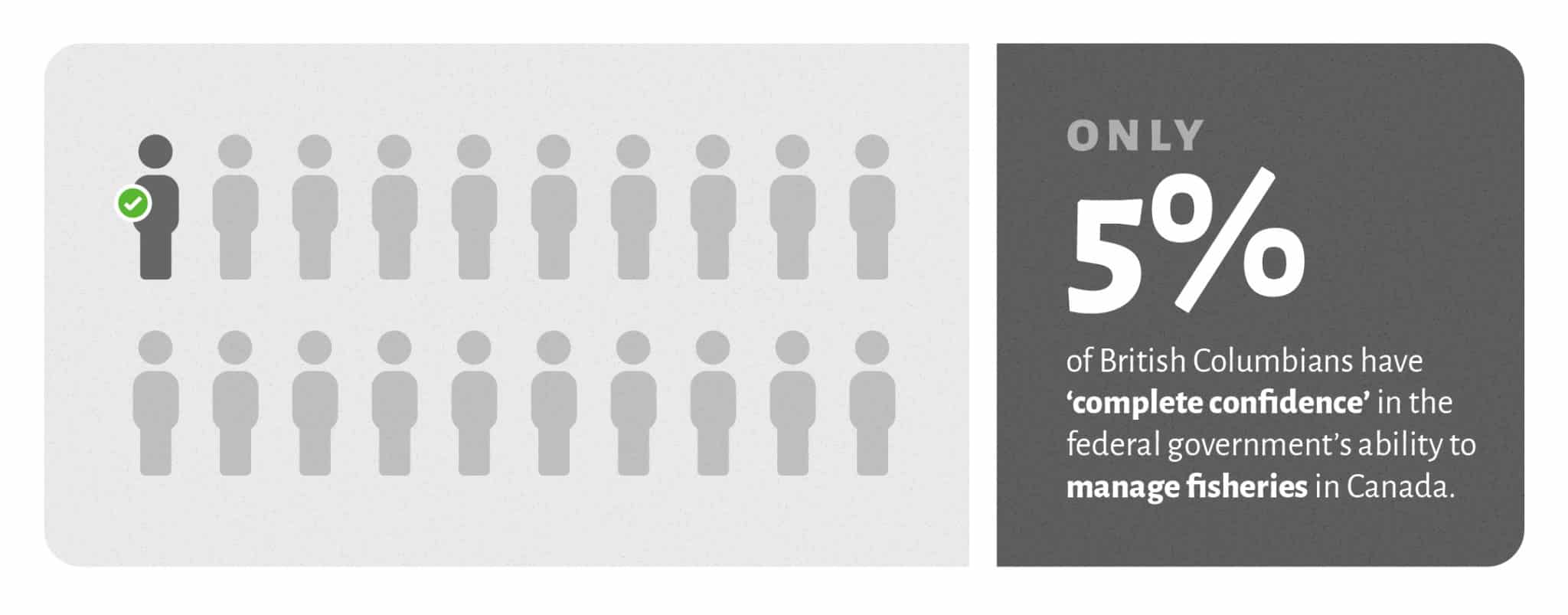
If a political party ran on a platform that included a ban on bottom trawling, 37% of British Columbians would be more likely to vote for this party. 38% of respondents would be just as likely to vote for this party as not. The highest potential swing was among B.C. Green voters with 58% saying they would be more likely to vote for a party supporting a ban on bottom trawling. This was followed by 45% of B.C. NDP voters and 34% of B.C. Liberal voters respectively.
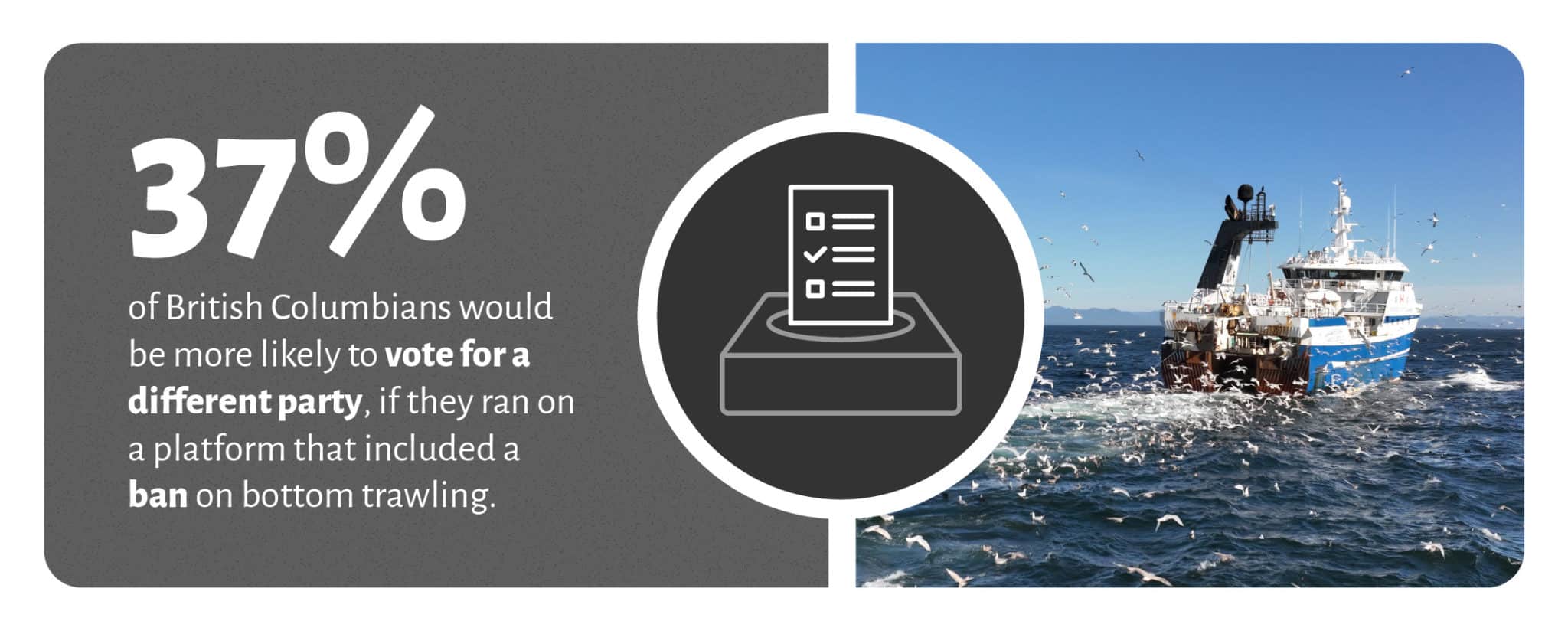
Respondents were asked about their levels of concern relating to various environmental impacts bottom trawling may cause. With the exception of climate change, over 80% of British Columbians are consistently either ‘very’ concerned or ‘moderately’ concerned about effects bottom trawling may have on the environment – regardless of past voting behaviours. On the subject of climate change, levels of concern are reduced substantially among respondents, across all major political parties. This is most notable among B.C. Green voters.
Conclusion
The Canadian and British Columbian public care deeply about trawling practices on their coast. Many do not believe this fisheries practice is currently being allowed. And yet, trawling is a growing industry in B.C.. A sound fisheries policy of trawler fishing practices would consider the views and opinions expressed by Canadians and British Columbians, as highlighted here. People care about the protection of their marine ecosystems and the life within it. This is especially true for species at risk and marine mammals, which are high-ranking concerns of note. This data shows a need to work harder at a holistic fisheries management plan and system that addresses the concerns of the people of this country.
For more information contact info@pacificwild.org.
